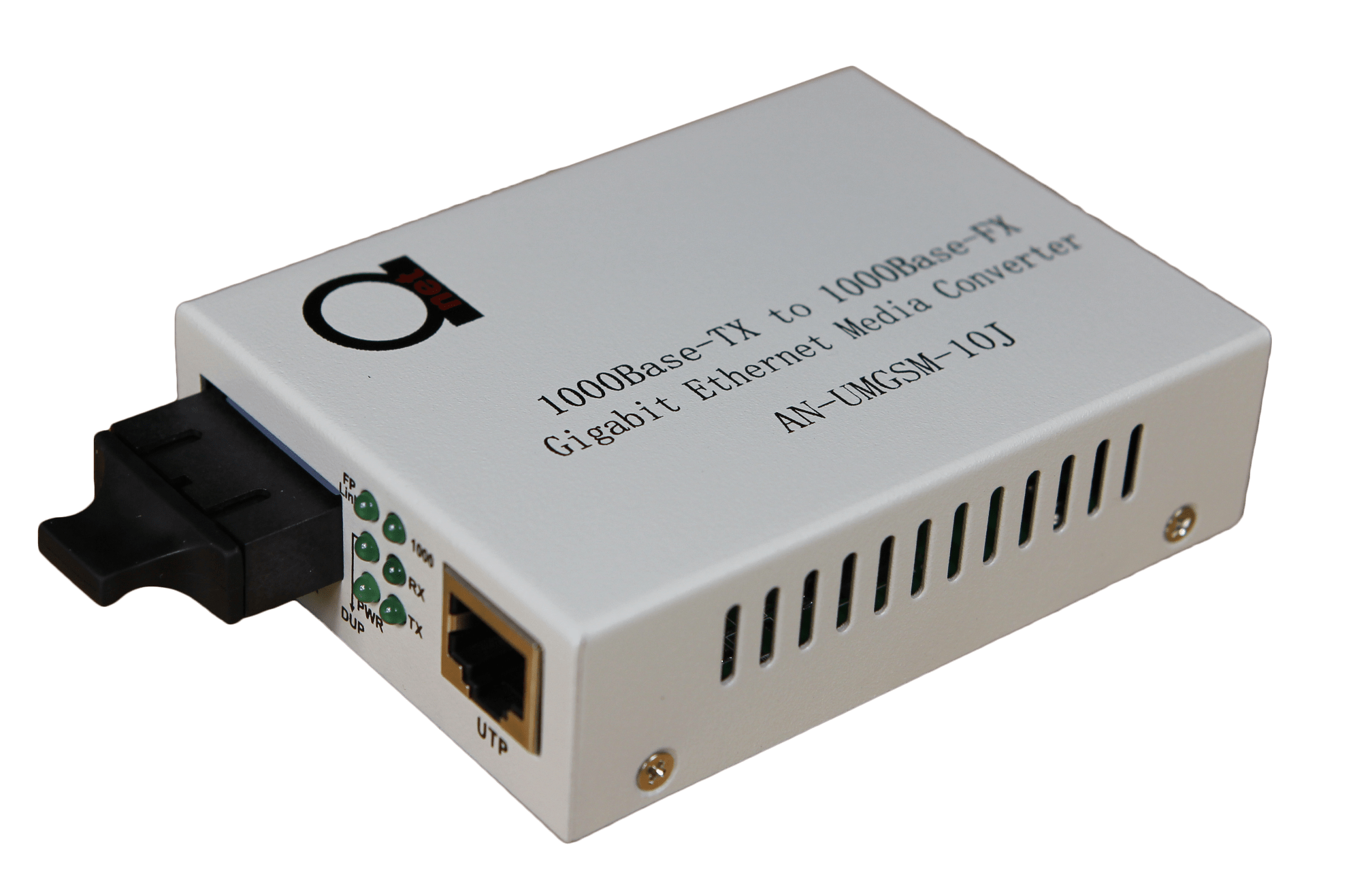Media converters are of the advanced equipments in the world of Telecommunications and Networking Equipment which do more than converting copper-to-fiber and converting between different fiber types.
Media converters are designed for such dynamic networks. They link dissimilar cabling media and can give network managers the freedom to take advantage of speed, bandwidth, and security enhancements as they become available. These devices do just what their name implies and convert data signals on one cabling medium to signals that can be transported over another medium. Thus, they make it possible to extend the life of legacy networks with the latest technology, rather than having to tear everything out and start over when new technology becomes available or–even worse–being stuck with an old technology.

Figure 1: ADnet Gigabit Ethernet Fiber Optical Media Converter with LFF (LFP) and Jumbo Frame support
Uses:
- Media converters for Ethernet networks can support integrated switch technology, and provide the ability to perform 10/100 and 10/100/1000 rate switching.
- Additionally, media converters can support advanced bridge features – including VLAN, Quality of Service (QoS) prioritization, Port Access Control and Bandwidth Control – that facilitate the deployment of new data, voice and video to end users.
- Media converters can provide all these sophisticated switch capabilities in a small, cost-effective device which makes them stand out among others Telecommunications and Networking Equipment and devices.
- Media converters save capital equipment expenditures (CAPEX) by enabling interconnection between existing switches, servers, routers and hubs; preserving the investment in legacy equipment which also reduces CAPEX by avoiding the need to install new fiber links by enabling WDM technology through wavelength conversion.
- Media converters also reduce network operating costs (OPEX) by helping to troubleshoot and remotely configure network equipment that is at distant locations, saving time and money when there is not a network administrator at the distant location.
Video 1: WDM 20 km single mode single fiber media converters in action


